Comparison between iQOO 12 Pro and Xiaomi 14 to clarify the most prominent differences between the two phones and the advantages and disadvantages of each. As a brand under Vivo, iQOO tries to focus on gaming demands with its major flagship phone series every year, which not only offers top-tier performance but also has the style and appearance that gamers love.
With the iQOO 12 series, the design of the phones has become more rounded. It is among the first phones to be launched with the improved Snapdragon 8 Gen 3 processor.
Comparison between Xiaomi 14 and iQOO 12 Pro
But it is not the only one either, as the same processor was used with the Xiaomi 14 series that was announced in China earlier this month. Currently, you cannot find many phones that are powered by the new Qualcomm processor.
Read also on Review Plus comparison Poco C65 VS Tecno Spark 10 Pro Our comprehensive breakdown of the difference between the Poco C65 and Tecno Spark 10 Pro – specs, features, prices, camera capabilities and more.
The Snapdragon 8 Gen 3 is manufactured using a 4nm manufacturing precision and an architecture consisting of eight cores in the form of 1 + 5 + 2, including one ultra-fast Cortex-X4 core clocked at 3.3GHz.
Use both Xiaomi 14 The iQOO 12 Pro has the leading ultra-fast LPDDR5X RAM chips. However, LPDDR5T chips are still completely absent from the public scene due to their high prices, with the only phones likely to use them in the near future being the Vivo X100.
LPDDR5T memory chips ensure approximately 13% higher bandwidth speed compared to LPDDR5X memory speed, with speeds of up to 8.3 Gbps and 9.5 Gbps respectively.
It is said that most companies were unable to use LPDDR5T chips over the past year not only due to their high prices, but also because the Snapdragon 8 Gen 2 processor was unable to take advantage of them.
So, even though the difference is almost unnoticeable between the two chips, it would still be nice to have it on any phone. But unfortunately, neither the iQOO 12 Pro nor the Xiaomi 14 came with the new memory, and instead both continued to use LPDDR5X.
The Snapdragon 8 Gen 3 chip contains a 30% faster CPU compared to the CPU inside the Snapdragon 8 Gen 2 chip, and the first chip is approximately 20% better in efficiency, ensuring longer battery life along with higher speed in performance.
You may be wondering: Why didn't we compare the iQOO 12 Pro with the Xiaomi 14 Pro. The reason for this is that the iQOO 12 Pro phone arrives in a price segment very close to the Xiaomi 14 phone.
Design differences

The worst flaw of the Xiaomi 14 phone is its external appearance, even if Xiaomi uses high-quality manufacturing materials in the design. Look for yourself at the round rear camera island, it's very wide and looks like the ones found on cheap phones where the LED flash unit is nested inside a circle resembling a camera lens.
It's a very cheap representation of superiority, and the LECIA logo only adds insult to injury. To be honest, it looks like a pretty ugly design that is not up to par with flagship smartphone designs. However, perhaps this is what we have become accustomed to with Xiaomi's flagship phones over the past years. There are those who love it and there are those who hate it, but in the end, there are some great specifications that are still able to attract your interest.
Metal and glass are used in the design of the Xiaomi 14 phone, with a special version containing a back side made of silicone polymer and available in four different colors including black, silver, green and pink. The phone has an IP68 certification for water and dust resistance, but we do not yet know what glass protection layer is used in this design.
Unfortunately, Xiaomi has decided to make titanium exclusive for the “Pro” model as this is the only phone to come with titanium frames instead of aluminum.
On the other hand, the iQOO 12 Pro phone comes with a more aesthetic and more convincing design, and is available in three colors, including black, white and red. The white model features the BMW logo on the back, and the red model has a back side made of a leather-like material. The white model relies on porcelain glass on the back, while the black model features a back made of Fluorite AG glass.
So, it is clear that iQOO has spent a larger amount in order to improve the overall aesthetic appearance of its phones this year, and provides more than one option to respond to the different tastes of users.
There is also an additional notable difference in the design of both phones. While the iQOO 12 Pro phone has a curved screen with rounded edges, the Xiaomi 14 comes with a flat screen and prominent edges with a boxy design.
The most important feature of the Xiaomi 14 and iQOO 12 Pro screen

As for the screen, there are some features that distinguish each of them from the other. Xiaomi used TCL's C8 display panel with the Xiaomi 14 phone, which can reach a manual brightness rate of 500 nits, but it may reach 670 nits under sunlight.
As for the 3000 nits brightness rate, it can only be achieved when watching HDR content under sunlight, which means it is just a feature to trick the user. Even the iQOO 12 Pro is capable of reaching 3,000 nits brightness with HDR content.
The unique features that the Xiaomi 14 has that cannot be found in the iQOO 12 Pro are support for Dolby Vision visuals. But it is worth noting that the iQOO 12 Pro phone supports a 144Hz refresh rate compared to the 120Hz refresh rate on the Xiaomi 14 phone.
If you want to take advantage of the dimming feature at any specific brightness level, you will have to activate Anti-Flicker mode on either phone.
The iQOO 12 Pro screen also has a QHD+ resolution compared to the FHD+ resolution on the Xiaomi 14 phone. Therefore, the accuracy and clarity of details on the iQOO 12 Pro phone will be noticeably better.
Overall, both displays will offer a great viewing experience with bright, vibrant colors and sure visibility regardless of the ambient light level. But there is one last advantage in the Xiaomi 14's favor as it has an LTPO OLED display panel which means it will support dynamic refresh rates.
As for the iQOO 12 Pro, it uses a Samsung E7 display panel, which is just an LTPS AMOLED panel. So, while they both have their advantages, both displays ensure that you enjoy an immersive and flawless experience.
But in the end, I will prefer the Xiaomi 14 screen due to it being an LTPO panel and supporting Dolby Vision visuals, and the idea of a higher 144Hz refresh rate on the iQOO 12 Pro will remain completely useless. The only exceptional feature that might make me lean towards the iQOO 12 Pro is because its screen supports QHD+ resolution.
Performance difference between iQOO 12 Pro and Xiaomi 14

While both phones are indeed powered by the Snapdragon 8 Gen 3 SoC, real-world performance may vary from one phone to another depending on the quality of the cooling system.
Unfortunately, these details can only be confirmed after reviewing reviews of both phones. But in the end, both phones are expected to provide unprecedented performance with modern and advanced games thanks to the new chip.
The Snapdragon 8 Gen 3 processor provides approximately 20% improved performance over the Snapdragon 8 Gen 2 processor in terms of computational processing, while delivering 40% better graphics processing performance, and is 20% better in power consumption.
However, it is not possible to confirm the superiority of one of them over the other until after seeing the reviews of both phones on the ground. It is also worth noting that the iQOO 12 Pro phone contains an additional chip, which means that it may consume a greater amount of power compared to the Xiaomi 14 phone.
If you trust the AnTuTu benchmark results, the iQOO 12 Pro is the best by a significant margin. But as we mentioned a moment ago, the superiority of one of them over the other cannot be confirmed except after reviewing both phones for a long period of time because it is possible that one or even both of them may suffer under heavy pressure and long gaming sessions to a degree of suffocation as a result of high temperatures.
But the initial AnTuTu benchmark results indicate that the iQOO 12 Pro has a better thermal system since it was able to score a higher number of points.
Both phones use ultra-fast LPDDR5X memory chips and up to 16 GB of RAM, along with up to 1 TB of UFS 4.0 storage.
Read also: Samsung Galaxy S23 Ultra VS Google Pixel 8 Pro Comparison
Which phone has the best camera?

Xiaomi has relied on Lecia lenses for several years, which, unfortunately, have not been widely received so far. Xiaomi's flagship phones have been known to have an issue with color saturation, but things were improved a bit on the Xiaomi 13 Ultra last year.
But it was very bad on the standard Xiaomi 13, and although the Xiaomi 14 has not yet reached the level of the Xiaomi 13 Ultra in camera color appeal, it is still a lot better than the Xiaomi 13.
Xiaomi also tried to fix many of the defects that the Xiaomi 13 series phones suffered from. The company used the new Light Hunter 900 sensor from OmniVision with a resolution of 50 megapixels. It provides extremely fine details, very good performance in low-light conditions, and the quality of the main camera has been clearly improved.
You can easily check out the camera samples online of the Xiaomi 14 camera which looks to be really impressive. It may not be exceptional or completely flawless, but it's still a lot better than the Xiaomi 13.
The telephoto camera does a great job too thanks to its 3.2x optical zoom capability through a 50MP sensor. There's also a 50MP ultra-wide camera
Then we come to the iQOO 12 Pro phone, which contains three lenses, the most important of which is the 64-megapixel periscope sensor, which supports 3x optical zoom and 100x digital zoom. And thanks to the new generation of NICE Neural Engine, you can actually capture clear images with fine details from long distances.
The iQOO 12 Pro supports three color modes including Vivid, Natural, and Texture mode, each of which has an advantage over the other. Natural mode may be more sensitive to light, but you can still adjust colors according to your specific shooting style and environment.
In the end, both phones will provide a more than excellent photography experience that goes perfectly with all photography scenarios. There is no need to worry about image quality or video recording in dim or low-light environments because the new main sensor on both phones is able to capture more light and improve the quality and accuracy of details in the darkest lighting conditions.
Battery and charging speed

Well, there are noticeable differences in battery life and capacity between the two phones, and with battery life being one of the most important differentiating factors between one phone and another at the present time, larger battery capacity may be a deciding factor for choice.
But a larger battery capacity does not necessarily mean a longer battery life or operating time. There are many factors that clearly affect the life and operating time of a phone to the point that it may not have the same operating time as another phone, even if the latter has a smaller battery capacity. .
For example, here we have the iQOO 12 Pro which has a 5100 mAh battery capacity. It's a more than impressive charging capacity and excellent considering that all the flagship phones are still plagued with a capacity of only 5000 mAh.
An extra 100 mAh may not be an amazing upgrade, but it's still good to see some power companies succeeding in increasing battery capacity without changing its physical size.
As for the Xiaomi 14 Pro phone, it draws its power from a 4610 mAh battery, which means it has a smaller battery by 500 mAh.
It's a huge difference without any doubt in favor of the iQOO 12 Pro, and in theory this means an additional number of hours of operating time for the iQOO 12 Pro.
But as we mentioned a moment ago, larger battery capacity does not necessarily mean longer operating time because there are many factors that affect battery life.
For example, the iQOO 12 Pro phone has a huge 6.74-inch screen, while the Xiaomi 14 has only a 6.3-inch screen. This small difference in screen size may result in significant power consumption. In addition, the iQOO 12 Pro phone has a display panel with a refresh rate of 144Hz, and this speed requires a greater amount of power compared to 120Hz panels.
The Xiaomi 14 phone has an LTPO display panel, which means it supports dynamic refresh rates. This means that it is able to adapt to the content displayed on the screen and automatically reduce the refresh rate in order to conserve power and extend battery life.
The iQOO 12 Pro phone has an LTPS display panel, which means it does not support a dynamic refresh rate. In addition, it is a QHD+ display panel with a higher resolution, which means it drains a greater amount of power.
So, you may eventually discover that neither one has an advantage over the other in terms of uptime. Meaning that while the iQOO 12 Pro has a larger physical battery capacity than the Xiaomi 14, it has a larger screen with a faster refresh rate and higher display resolution, not to mention that it contains an additional image processing chip and a dedicated neural processor.
So, don't let the battery capacity greatly influence your decision to choose one over the other. Perhaps the charging speed is the deciding factor to distinguish between them.
While the Xiaomi 14 supports 90W wired charging speed, the iQOO 12 Pro supports 120W fast charging. Xiaomi claims that it is possible to charge the Xiaomi 14 from 0 to 100% in just 31 minutes. It's definitely a record speed, and by the way, this phone comes with a 90W charger included in the box.
The iQOO 12 Pro phone supports 120-watt wired charging, and it also comes with a charger included in the purchase box (we have not confirmed this yet).
Therefore, although the iQOO 12 Pro supports 30% faster charging, it has a larger physical battery capacity, and may end up needing the same period of time as the Xiaomi 14 in order to fully fill the battery.
Is there anything else?

While neither has a 3.5mm jack for wired headphones, they both have dual stereo speakers. The positive aspect of the iQOO 12 Pro phone is that it supports 32-bit/384KHz audio encoding, while the Xiaomi 14 relies on a 24-bit/192KHz encoding equalizer.
But you are not expected to face any problem with the sound quality of either of them. The stereo speakers on both phones are able to provide an immersive audio experience while listening to music or watching movies and videos, to the point that you may not be able to use wireless earphones completely.
Another thing worth noting is that the Xiaomi 14 uses an optical fingerprint scanner under the screen, while the iQOO 12 Pro has an ultrasonic scanner, which means the latter guarantees you a better experience, faster fingerprint response, and a larger physical area to cover the fingerprint. While unlocking the phone.
The iQOO 12 Pro still uses a USB-C 2.0 charging port, while the port on the Xiaomi 14 has been upgraded to USB-C 3.2.
These minor differences may be very minor and not noticeable in real world use, but we always find it best to mention them just in case to prepare for future use.
Read also: iPhone 15 VS Samsung S23: comparing Specs and prices
Conclusion
So from this comparison, which is better: Xiaomi 14 or iQOO 12 Pro? In fact, there are some things that we did not discuss in detail in this comparison, although they may play an essential role in distinguishing between both phones.
For example, Xiaomi 14 comes with the new interface from Xiaomi, which is HyperOS. However, we don't know what this interface will look like. Over the years, Xiaomi phones have suffered heavy criticism due to their largely cluttered MIUI interface.
So, we hope that HyperOS will mark a new era in Xiaomi device software. If it adopts the same usual layout of the MIUI interface, you may encounter some problems with it at the beginning of your use, especially if you were not used to it previously.
Next, comes the screen. The iQOO 12 Pro has a QHD+ display with a 144Hz refresh rate, while the Xiaomi 14 comes with an FHD+ resolution and a 120Hz refresh rate. However, it has Dolby Vision visuals and its display panel is LTPO. Therefore, each of them has a unique feature, and you should determine which features are best for you to choose the most suitable option according to your ambitions.
Performance will be the same on both since they use the same chip, and the same type of RAM and internal storage. The photography capabilities on both phones are more than great, but the iQOO 12 Pro provides you with 100x digital zoom thanks to the periscope lens, which supports a higher resolution (64 megapixels).
The battery is larger on the iQOO 12 Pro, but it has a larger screen, faster refresh rates, and an additional processing chip, so it will consume more power during the same period.
The fingerprint sensor on the iQOO 12 Pro works with ultrasonic waves, which means it responds faster than traditional optical sensors.
If it were up to me personally, I would prefer to own the iQOO 12 Pro, but at the same time I am very excited to try the new HyperOS interface from Xiaomi, which may turn the tables upside down during the coming period, especially if it is able to prove its superiority.

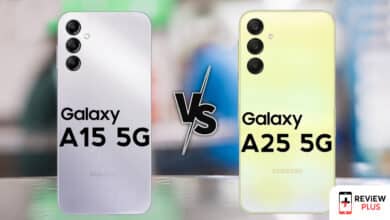
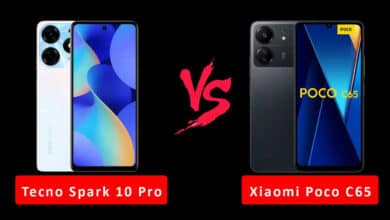
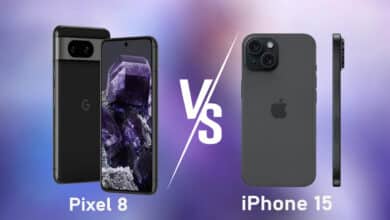
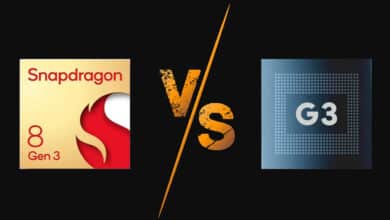
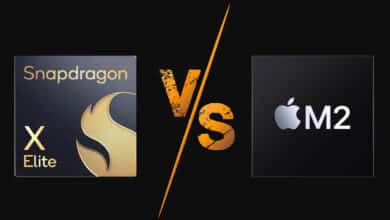
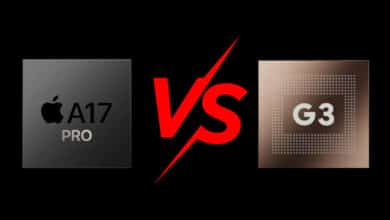
Excellent post! It captivated me from start to finish. I’m always on the lookout for such informative and well-structured content.